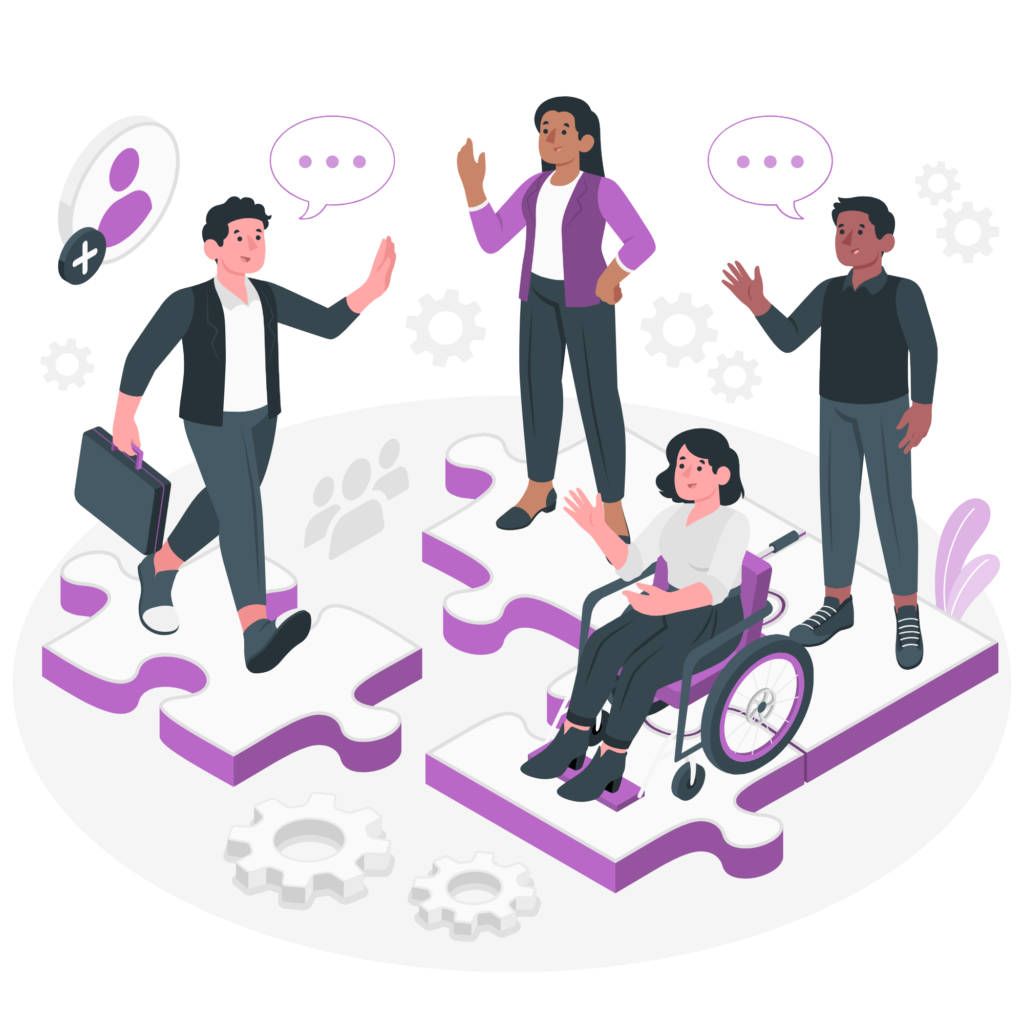Back to the Repository content
Digital spaces are uniquely equipped to support all learners with different abilities by offering multiple means of representation – contents displays and participation options). How can we organize learning activities in digital spaces, inviting and harnessing the diverse perspectives and identities of learners? How can we use digital functionalities to ensure learning accessibility to broad audiences?
People illustrations by Storyset

Multiple means of representation are created by offering choices via customized learning formats and ensuring content accessibility. This includes providing content in text, audio, and video formats, allowing learners to choose the medium they prefer. Visual aids such as diagrams, charts, and images help clarify complex concepts and make information more accessible. Using interactive and dynamic digital elements like quizzes and simulations can engage learners and reinforce understanding.
Accessible digital content, as outlined by WGAG guidelines, includes several key elements. Providing alternative text for images and hyperlinks ensures that visually impaired learners can access the content, benefiting all learners with diverse abilities. Adding captions and transcripts for audio and video content make it accessible to learners who are deaf or hard of hearing, while also benefiting all differently-abled learners. Displaying content in clear fonts and high-contrast colors ensures readability for everyone.
Representation through choice and flexibility can significantly increase motivation and engagement. Allowing learners to choose their own path through the material makes learning more personalized and engaging. Providing optional resources for those who want to explore topics in more depth fosters curiosity and active learning. Offering flexible assessment options accommodates diverse strengths and preferences, enabling learners to demonstrate their knowledge and skills in various ways.
Practice:
Review and Suggest Representation Options
-
- Think about an educational setting in which you teach or have learned, an example w
- Recall, what multiple options for representation were available to learners in that setting to express their perspectives and identities, contributing to the sense of inclusion and validation?
- Could you suggest any concrete improvements to make that learning setting more inclusive for diverse learners?
- Share your review of the representation options. Add your message as a comment to this page.
Multiple means of Representation – implementation examples
Example 1: Learning about the Water Cycle
The instructor provides a demonstration video explaining the stages of the water cycle. Students are also given a link to an interactive simulation where they can manipulate elements like evaporation and precipitation and observe the effects. For their final task, students can choose to either write a report, create a diagram with labels, or give a short verbal presentation explaining the water cycle to the class.
Example 2: Participating in a Class Discussion about a Novel
The instructor poses a central question about the main themes of the novel. Students can select to respond to the question either in a form of verbal presentation during the live class session or by posting their thoughts as a text in a discussion forum. The instructor has set a requirement for students to make a verbal presentation duration within 3 minutes, and a requirement to post one thoughtful text (within 500 words) and respond at least to one classmate’s comment by the end of the week. The quality of their contributions will be assessed based on the depth of their analysis and their engagement with others’ ideas.
Example 3: Completing a Math Problem Set
The online learning platform presents math problems in a standard text format. Students are required to show their work step-by-step in a designated answer box. The system provides immediate feedback on whether the final answer is correct. Students have unlimited attempts to get the correct answer.
Example 4: Working on a Group Project about Local History
The instructor assigns students to groups and tasks them with researching a specific aspect of local history. Groups can decide how to divide the research and how they will present their findings to the class. Options include a traditional verbal presentation in person, sharing a short documentary video, a website with a museum-style graphic exhibit. The instructor provides a rubric outlining the key elements that must be included in the final project, such as historical accuracy, clear presentation, and evidence of collaboration. The rubric also specifies how each element will be graded.
Leave a Reply